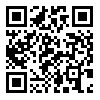BibTeX | RIS | EndNote | Medlars | ProCite | Reference Manager | RefWorks
Send citation to:
URL: http://frooyesh.ir/article-1-6082-en.html
2- Associate Professor, Department of Psychology, Faculty of Literature and Humanities, Urmia University, Urmia, Iran. ,
3- Professor, Department of Psychology, Faculty of Literature and Humanities, Urmia University, Urmia, Iran.
This study aimed to investigate the mediating role of intolerance of uncertainty in the relationship between neuroticism and body dysmorphic disorder in candidates for various Facial cosmetic surgeries. It employed a descriptive-correlational design based on structural equation modeling. The statistical population consisted of applicants visiting dermatology, hair, and cosmetic clinics in Urmia during July and August 2024. A total of 300 individuals participated through convenience sampling and completed questionnaires, including the Yale-Brown Obsessive-Compulsive Scale for Body Dysmorphic Disorder (YBOCS-BDD; Phillips, 1997), the Five-Factor Personality Questionnaire (FFPQ; McCrae & Costa, 2004), and the Intolerance of Uncertainty Scale (IUS; Freeston et al., 1994). Data analysis was conducted using structural equation modeling. The results indicated that the proposed model demonstrated good fit. Neuroticism had a significant positive direct effect on body dysmorphic disorder, while intolerance of uncertainty also had a significant positive direct effect on body dysmorphic disorder. Additionally, neuroticism had a significant positive direct effect on intolerance of uncertainty (P<0.05). Bootstrap test results showed that intolerance of uncertainty significantly mediated the relationship between neuroticism and body dysmorphic disorder (P<0.05). The findings suggest that neuroticism influences body dysmorphic disorder both directly and indirectly through the mediation of intolerance of uncertainty.
Received: 2025/03/1 | Accepted: 2025/04/30 | ePublished: 2025/10/2
| Rights and permissions | |
 |
This work is licensed under a Creative Commons Attribution-NonCommercial 4.0 International License. |





